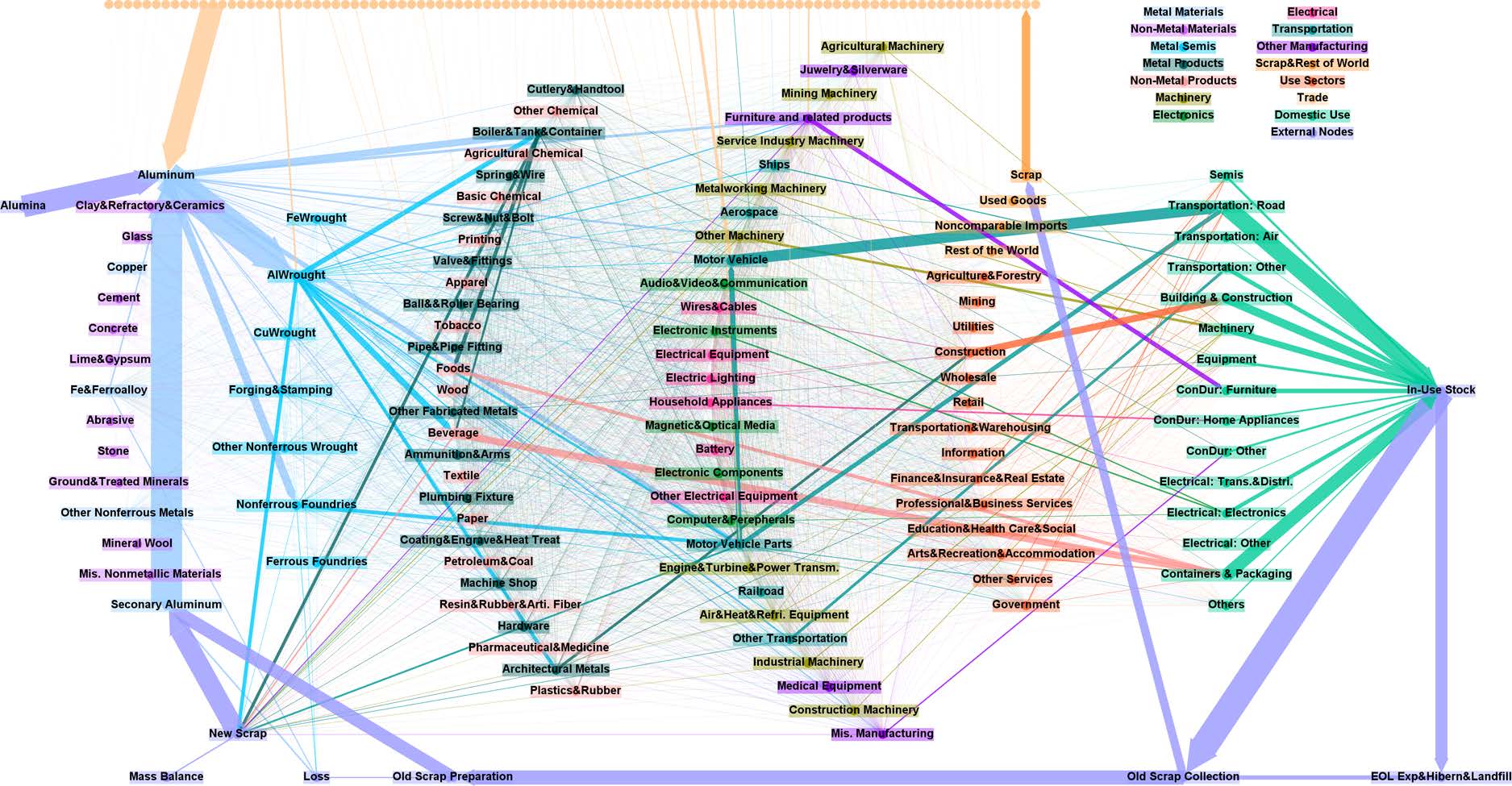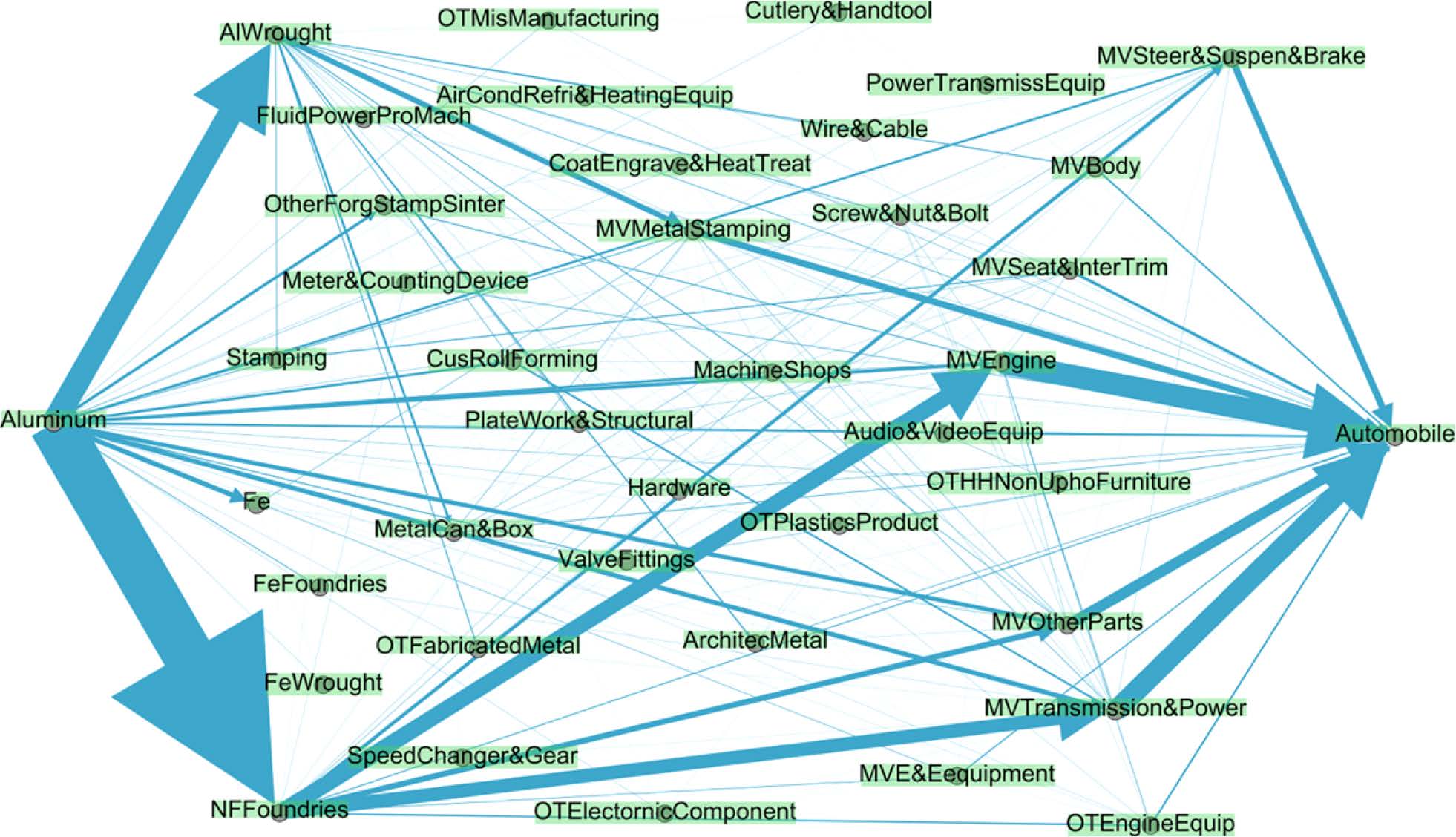Chen, Wei-Qiang*; Graedel, T. E.; Nuss, Philip; Ohno, Hajime
Environmental Science & Technology 2016 50 (7), 3905–3912. DOI: 10.1021/acs.est.5b05095
Abstract
Based on the combination of the U.S. economic input-output table and the stocks and flows framework for characterizing anthropogenic metal cycles, this study presents a methodology for building material flow networks of bulk metals in the U.S. economy and applies it to aluminum. The results, which we term the Input–Output Material Flow Networks (IO-MFNs), achieve a complete picture of aluminum flow in the entire U.S. economy and for any chosen industrial sector (illustrated for the Automobile Manufacturing sector). The results are compared with information from our former study on U.S. aluminum stocks and flows to demonstrate the robustness and value of this new methodology. We find that the IO-MFN approach has the following advantages: (1) it helps to uncover the network of material flows in the manufacturing stage in the life cycle of metals; (2) it provides a method that may be less time-consuming but more complete and accurate in estimating new scrap generation, process loss, domestic final demand, and trade of final products of metals, than existing material flow analysis approaches; and, most importantly, (3) it enables the analysis of the material flows of metals in the U.S. economy from a network perspective, rather than merely that of a life cycle chain.
Material flow network of aluminum in the entire 2007 U.S. economy.

Material flow network of aluminum for producing automobiles in the United States in 2007.
